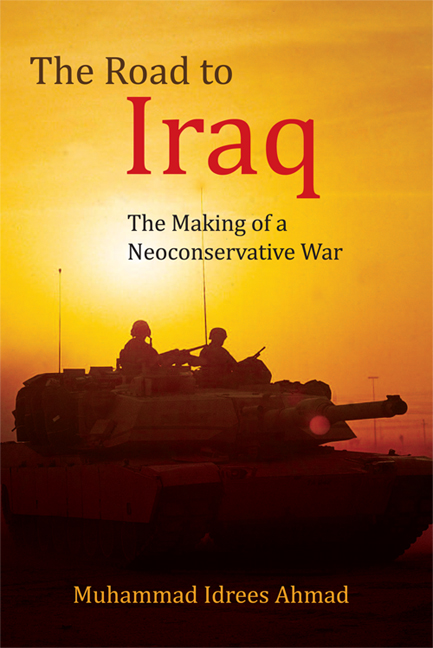4 - Setting the Agenda
from Part 3 - The Case for War
Published online by Cambridge University Press: 05 August 2016
Summary
In 2002, the Bush Administration was embarking on a war to preempt a ‘grave and gathering threat’. The administration alleged that Iraq possessed WMDs, including nuclear, chemical and biological munitions. It also alleged that Iraq had links to Al-Qaeda. The conjunction of the two made the threat imminent as Iraq could at any time pass its weapons to terrorists committed to the destruction of the US. The evidence of intention and capability was scant, but, in the evocative words of one administration official, they did not want the smoking gun to be a mushroom cloud.
The pre-emption two-step
That Iraq had no WMDs is now well established. The Iraq Survey Group's comprehensive investigation failed to turn up any weapon or a weapons programme. But all of this could have been ascertained without an invasion. Hussein Kamel – the Iraqi dictator's son-in-law and head of his weapons programme – had defected to Jordan in 1995 where he confirmed to his UN interrogators that he had ‘ordered destruction of all chemical weapons. All weapons – biological, chemical, missile, nuclear – were destroyed.’ The weapons programmes had been dismantled. Both Condoleezza Rice and Colin Powell had admitted in 2001 that Iraq had been effectively disarmed and contained. This view was also shared by the IAEA and later confirmed by renewed inspections. Multiple intelligence sources had also confirmed ahead of the war that Iraq had no WMDs.
Nor did Iraq have links to Al-Qaeda. Exhaustive studies by both the 9/11 Commission and the Pentagon have failed to turn up any operational links between the two. This was also known before the war. The State Department's annual ‘Patterns of Global Terrorism’ report for 2000 states that Iraq had ‘not attempted an anti-Western terrorist attack since its failed plot to assassinate former President Bush in 1993 in Kuwait’ (the specifics of which are disputed). Though it mentions Iraq hosting several terrorist organisations, all of them targeted either Israel (Arab Liberation Front, Palestine Liberation Front, Abu Nidal Organization) or Iran (Mujahideen-e-Khalq). Immediately after 9/11, the White House Counter Terrorism Coordinator and the CIA had confirmed that no such links existed. The various claims about Iraq's alleged links to Al-Qaeda had also been comprehensively debunked by a CIA study headed by Michael Scheuer long before the war.
- Type
- Chapter
- Information
- The Road to IraqThe Making of a Neoconservative War, pp. 105 - 133Publisher: Edinburgh University PressPrint publication year: 2014

